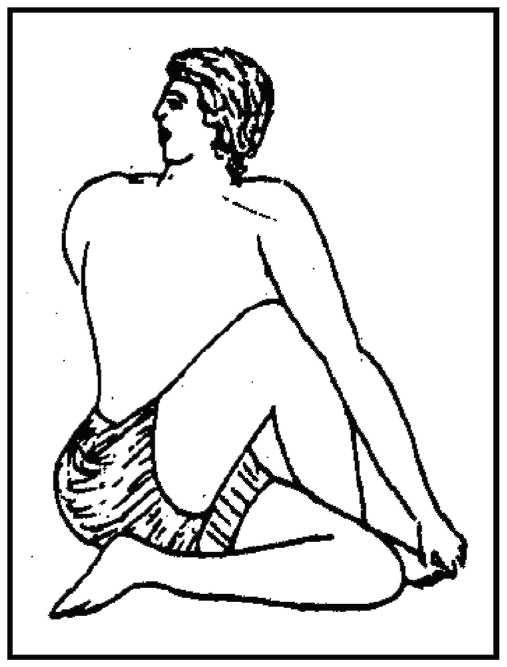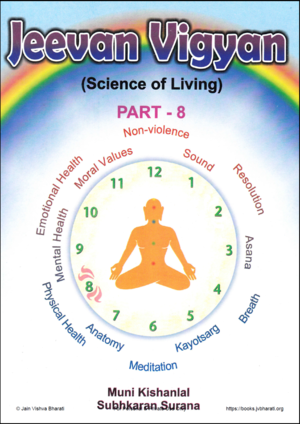
The word asana is derived from the Sanskrit word Asa. It has a wide ranging meaning. Whenever a person assumes a particular posture while sitting, standing or lying down and carries out certain specified exercises, it is called asana. The most important factor of an asana is to stay in that particular posture for the specified period, mostly for 2 to 5 minutes, paying special attention to the breathing cycle.
Asanas are a unique invention of ancient Indian sages and Yogis. It ensures a healthy body, a peaceful mind, and prepares a person to embark upon intellectual and spiritual development. These yogic exercises exert pressure and tension on the relevant internal and external body organs and muscles in such a manner that unwanted material from within the body is expelled through outlets meant for this function. This brings in clean and flesh blood supply, regulates blood circulation, and one feels energetic, active and alert. Tension exerted on the nerves makes the nerve-centres active and strong.
Moreover, asanas regulate and improve the functioning of various body organs. The system of blood purification becomes better and regular. Various glands that produce beneficial liquids or juices inside the body also get activated by asanas. In short, Yogic Asanas are an easy means to keep our body healthy and fit, internally as well as externally.
PRECAUTIONS
However, before we discuss the procedure of various asanas, it is very important to revise the precautions that we should take while performing them. These are:
- The end result of an asana must be cheerfulness and not fatigue.
- It is not desirable to complete all asanas without stopping in between. After every asanas it is important to pause for about minutes and then begin the next one.
- The force exerted while carrying out these exercises should not cause undue tension on any organ of the body.
- Alertness and self-confidence while doing asanas would ensure achievement of the desired aim.
- If these exercises are suspended for a long time, then one has to start from the very beginning. But then it does not take very long to arrive at the stage where the exercises had been left.
- These exercises should not be done for hours after meals (solid or liquid foods) or after a full intake of any liquid.
- After completing the exercises, one must wait for at least half an hour before taking any kind of solid or liquid food.
- The number of asanas must be gradually increased in the exercises routine. Instead of completing a large number of asanas in a short time-span, one must try to increase the time-span of each asanas.
- Normally one must breathe in (inhale) deeply while doing the asanas unless otherwise specified. While bending forward one should breathe out (exhale); while bringing the body back to the erect position, one should breathe in (inhale).
- It is necessary to undertake the Pranayam after completing the asanas. Time for Pranayam should be increased gradually.
- While doing any asana one should keep oneself mentally alert and concentrate on the asana. One should visualize oneself in that particular asanas.
ARDHA MATSYENDRASANA
This asana is of sedentary nature. It is beneficial for spine, spinal cord, pulsatory and sensory nervous systems. It makes them flexible and active. The entire digestive system—i.e. the stomach, liver, spleen, small intestines and large intestines—gains vitality and start functioning more efficiently. Besides, this asana is a great boon for kidneys. It also makes the chest robust, and strengthens the neck muscles.
The technique of the asana should be learnt under the guidance of a qualified yoga teacher. It must be kept in mind that while performing this asana the movement of limbs and waist should not cause any pain in any part of the body. If so, the asana should be performed only after teacher's permission. However, one must be patient and proceed step-by-step.
PROCEDURE: Spread both the legs in front of you. Fold the left leg and bring it back into a position under the hips and the anus. Now lift the right leg, fold it at the knee and bring the right foot just near the left knee so that it touches the outer side of the left thigh. The right knee should keep on touching the chest.
Now bring the left hand around the right knee and with it catch hold of the right foot. Now breathe in (inhale) deeply. Take the right hand around the back so as to try to touch the navel with your right hand fingers.
Now breathe out and turn the neck and waist to he left towards backside so that you can see the back (or a portion of your back) and the right elbow.While you are at this point, the chin and the right jaw should be touching your left shoulder. Breathe deeply a few times. Retrace yourself back to the original position, step by step, slowly.
TIME: The time span for this asana may be gradually increased from half a minute to three minutes.ADVANTAGES: This asana removes the pain in the joints of spine. It is beneficial for the disorders of stomach, intestines, nervous debility, indigestion, pain in the waist region, AAMVAAT and diabetes. It improves digestion and cures diseases caused by worms.
NOTE: In case someone is unable to perform this asana because of the rigidity in the body or fatness, the teacher may allow him/her to perform this asana keeping both legs straight.
EXERCISE
- What are the precautions that must be taken while performing asanas?
- What are the advantages of Ardha Matsyendrasana?
- Describe the procedure of performing the Ardha Matsyendra Asana?
